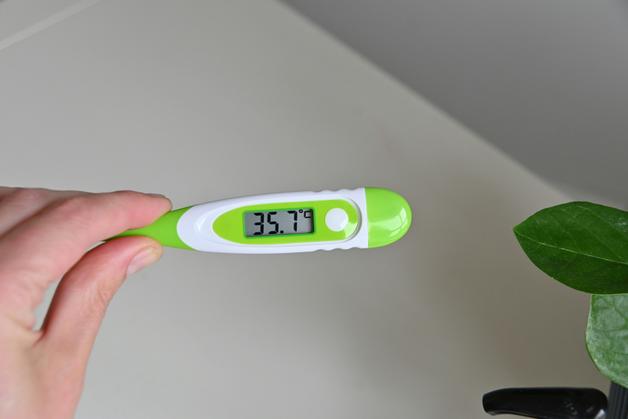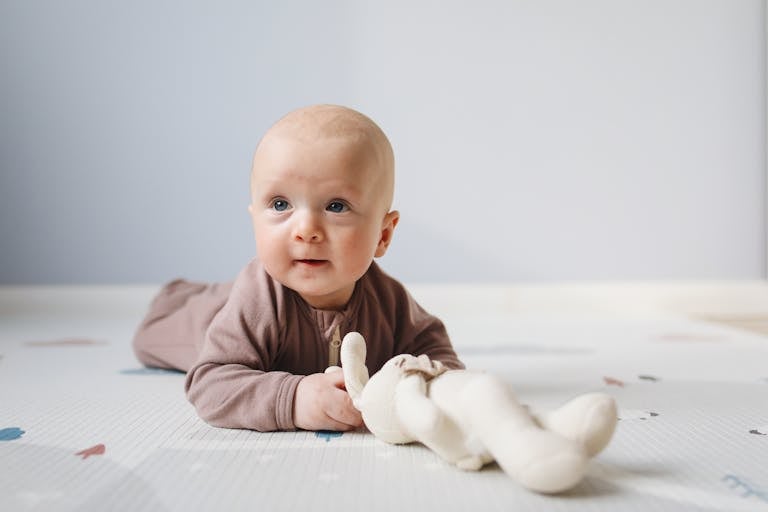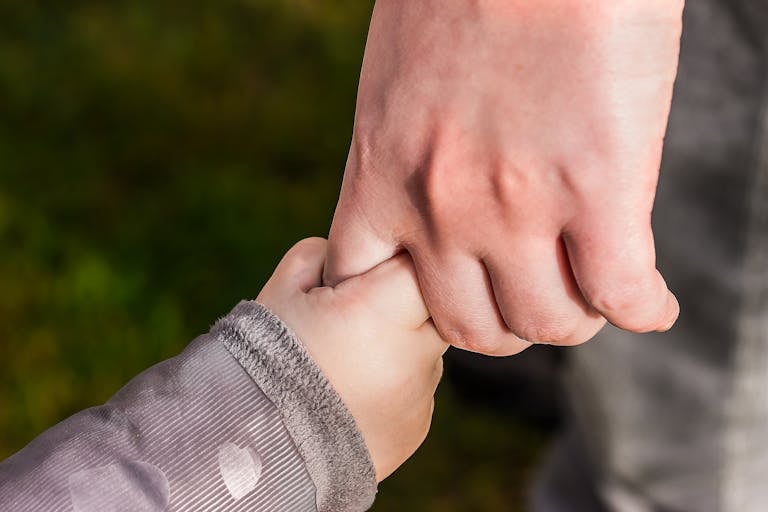Curious faces pressed against the crib bars, tiny hands reaching for a toy hidden beneath a cloth—these daily moments raise big questions in the minds of parents. Why does a baby cry when you walk away, yet burst with joy upon your return? What explains the intense anxiety during bedtime, or that sudden, delighted giggle when you pop back into view? At the heart of these experiences lies object permanence, a building block for healthy emotional security and budding independence. Many parents wonder: When should I expect my child to develop this awareness? Is it worrisome if my baby doesn’t search for hidden objects? What does this milestone mean for memory, attachment, and even later learning? Navigating these uncertainties means striking a balance—between scientific knowledge, practical reassurance, and supportive daily routines. Object permanence reveals itself in a whirlwind of emotions, playful experiments, and neural breakthroughs worth exploring together.
Understanding object permanence: what’s actually happening?
What if the world vanished the moment you closed your eyes? For very young babies, that strange scenario is surprisingly real. Object permanence is described by developmental psychology as the knowledge that things—people, pets, toys—exist even when out of direct sensory reach. It’s a foundational step, signaling a cognitive leap from the “now or never” phase to building mental images (sometimes called schemas) of familiar objects.
Parents often notice early signs between 4 and 7 months. A baby who tracks the arc of a ball rolling behind a chair, who becomes fascinated by the peekaboo game, or who stares intently at a closed cupboard where a favorite rattle disappeared—all are piecing together the puzzle of object permanence. This doesn’t happen overnight. The brain, especially the prefrontal cortex (important for working memory and mental representation), is working hard behind the scenes to organize these experiences and store information for later retrieval.
Notably, scientists like Jean Piaget, regarded as a pioneer in this field, observed that infants under 8 months might act as if a hidden toy has simply ceased to exist. By around 8 to 12 months, a concerted search for objects begins, even if the toy was moved from one hiding spot to another—though errors (such as the “A-not-B error”) are common. Suddenly, your baby believes your disappearing act is temporary, not terminal. A seismic shift, both in the mind and in daily life.
How does object permanence affect daily life and emotional growth?
Why does separation anxiety seem to explode just as a child’s world appears to get bigger? It’s no coincidence. As object permanence develops, babies grasp that parents continue to exist even when unseen—an exhilarating and, sometimes, unsettling realization. You might observe:
- Distress when leaving the room: Tears at your departure no longer mean the world has ended; rather, your baby is grappling with the new knowledge that you continue to exist elsewhere.
- Attachment formation: Trust and emotional bonds deepen, since consistency and predictability bring comfort. This is a stepping stone toward emotional regulation and resilience.
- Memory and future cognition: Once the concept of constancy is secure, the stage is set for more advanced mental skills—spatial awareness, problem-solving, even imagination.
- Emergence of social reference: Your child begins to anticipate familiar routines, search for loved faces, and show delight—or protest—at comings and goings.
None of this happens in a vacuum. Family routines, responsive caregiving, and cultural nuances all provide a backdrop. Some parents notice evident signs early, while for others, the process is subtle. Babies aren’t robots—developmental timelines are best seen as flexible frameworks, not rigid rules.
The science: what’s really going on in a baby’s brain?
Terms like prefrontal cortex, mental representation, and schemas may sound daunting, yet they reflect phenomenal changes under the surface. The sensorimotor stage (birth to approximately 2 years) is where the action unfolds. Neuroscientific studies point to the rapid formation of new neural connections, especially those needed for storing and retrieving information about people or things that are momentarily out of sight.
Piaget described six substages, tracking the march from reflex-driven responses (think sucking, grasping) to mental problem-solving. At first, if a pacifier drops from view, it’s simply “lost”—the concept of continuity is not yet established. Step by step, through repeated playful interactions and observation, children begin to seek out what was once invisible.
Modern experiments add another layer. Using the violation-of-expectation paradigm, researchers watch for longer gazes at “impossible” events (such as an object vanishing or magically reappearing). This suggests even infants as young as 3 to 4 months may have some inkling of object permanence, though limited by motor skills.
Stages and milestones: what should parents expect—and when?
Children’s progress varies widely, but here’s a practical breakdown to orient expectations:
| Age Range | What Might Happen | Object Permanence Milestone |
|---|---|---|
| 0–1 month | Reflexes dominate, no interest in hidden objects | No sense of object permanence |
| 1–4 months | Watches moving items, loses interest once gone | Minimal early awareness |
| 4–8 months | Reaches for partly hidden toys, may lose interest fast | Not yet searching for fully hidden items |
| 8–12 months | Actively searches for hidden toys, possible errors | Intentional search, A-not-B error |
| 12–18 months | Explores multiple locations, solves more complex tasks | Broader, less error-prone search |
| 18–24 months | Solves “invisible displacement” problems, uses mental images | Full object permanence |
Rhetorical question: Does a few weeks’ delay spell disaster? Far from it. Each baby sets their own pace. Mobility limits or certain medical conditions may slow outward signs, but the underlying cognitive shift may still be proceeding robustly.
Everyday signs and playful ways to nurture object permanence
Ready for some detective work at home? These behaviors can spark recognition:
- Looking beneath a blanket for a missing toy
- Refusing to settle until a lost pacifier is found
- Becoming anxious when a parent leaves and reappears
- Delight in push-and-pop or peekaboo games
- Improvised “hide-and-seek” with objects or people
Practical tips matter. Try:
- Peekaboo: This isn’t just fun—it’s a powerful workout for the memory circuits.
- Hide a favorite object and narrate (“Where’s bunny? Oh, here!”).
- Rotate the hiding places to promote flexible thinking.
- Offer books with flaps or surprise pictures to stimulate investigation.
- Opt for Montessori-inspired object boxes—simple, tactile, and engaging.
A clinical aside: If your child’s motor skills are delayed (for example, not reaching or crawling), adapt the setup—place objects within easy reach or use visual prompts.
What if object permanence develops differently?
No two developmental paths look the same. For some children with motor delays, Down syndrome, or other neurodevelopmental diagnoses, the sequence might appear altered or lengthened, but the process is still unfolding. Strong social engagement, encouraging routines, and sensory-rich play can bolster this journey. And for families managing differences in physical mobility, tailored adjustments (like using larger, easier-to-grasp objects or involving a therapist) make all the difference.
A common misconception links object permanence struggles to ADHD—but the evidence points elsewhere. ADHD affects working memory and attention, not the foundational grasp that objects exist when hidden.
Different cultural backgrounds also shape how and when object permanence becomes visible: shared play, family attitudes toward independence, and available resources play important roles.
Practical strategies: reducing anxiety and building confidence
As object permanence builds, separation anxiety may spike. Tears at goodbye time? Not a mark of failure—it’s evidence of a developing, sophisticated mind testing the boundaries of presence and absence.
To support your child:
- Use consistent cues (“I’ll be right back after your nap”), so routines become comforting signposts.
- Offer a favorite stuffed animal or soft blanket as a standby during separations.
- Practice short periods of absence and cheerful returns.
- Avoid sneaking away. Saying goodbye fosters trust, not distress.
- Keep partings brief and calm—your mood is contagious.
Persistently high distress around separation, if it lasts well beyond 24 months or disrupts daily functioning, suggests reaching out to a trusted professional can shed light and offer tailored support.
Object permanence in other species: are humans unique?
Humans are not the only ones to display these abilities. Primates, such as chimpanzees, handle simple object-hiding games with confidence. Dogs and cats search for lost toys (to a limit), while crows and parrots have been known to solve hidden-object puzzles on par with toddlers. These examples highlight the value of social interaction, environmental stimulation, and adaptive learning—across species and childhoods alike.
Key Takeaways
- Object permanence marks a dynamic turning point in memory, attachment, and emotional growth, and unfolds over many months with bursts of progress and occasional pauses.
- Milestones vary, yet consistent playful routines, empathy, and developmentally appropriate expectations foster resilient, curious children.
- Emotional challenges like separation anxiety are tightly linked to an expanding sense of the world’s constancy—responding with patience and predictability builds long-lasting trust.
- Adaptation matters: for children showing unique developmental patterns, flexibility and targeted support make a measurable difference.
- Resources abound—if concerns persist or symptoms seem unusual, healthcare professionals are well-placed to offer reassurance and, when needed, intervention.
- Want tailored advice, health questionnaires, and daily parenting tips? Try the Heloa app for accessible, personalized support right from your phone.
Above all, every new discovery—a hidden bear found, a giggle after peekaboo, or the calm that follows your return—adds energy to the intricate dance of learning and bonding. With warmth, information, and encouragement, you empower your child to meet the world’s constant rhythm—one peek, one puzzle, one joyful reunion at a time.
Questions Parents Ask
How can I help my child if they have difficulty understanding object permanence?
It’s natural for some children to need more time to fully grasp that objects and people still exist even when out of sight. If your child seems to struggle with this concept, gentle encouragement and playful activities can support their progress. Try playing games like peekaboo, hiding favorite toys in easy-to-find spots, or using books with flaps to encourage curiosity. Remain patient and reassuring—each child develops at their own pace. For children facing more persistent difficulties, or if there are other concerns with development, discussing observations with a health professional can bring additional suggestions and reassurance tailored to your family’s situation.
Are there activities that encourage the development of object permanence?
Absolutely! Everyday interactions can be wonderful opportunities to nurture this important milestone. Peekaboo remains a favorite because it introduces the simple idea of disappearance and return. You might also try hiding a toy under a cloth and gently prompting your baby to search for it, or using stacking cups with hidden surprises inside. Rotating and slightly changing the hiding places keeps the activity fun and fresh. These games turn learning into a moment of joy and discovery for your child.
Does delayed object permanence mean there is a developmental issue?
A slower progression in understanding object permanence does not automatically point to a problem. Every child follows their own timing, influenced by temperament, opportunities for play, and even cultural differences in daily life. Some children may show clear interest earlier, while others take longer to show consistent searching behaviors. If you ever notice significant delays in multiple areas of development (like communication, movement, or social engagement), it may be helpful to seek advice from a healthcare professional for peace of mind and individualized guidance. Most delays are temporary, and many children catch up with a bit of encouragement and time.










